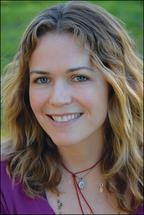
DOWNTOWN — Some people strive to set examples, while others just choose to live them. Margaret Hyde is one of the latter.
It’s part of the reason that her house in Downtown Santa Monica remains the uncontested champion of green living, and why her popular children’s book series Mo’s Nose not only encourages kids to read, but does so using recycled paper and aromatherapy.
For Hyde, it’s less an aim than a consequence of living her beliefs, or as she refers to it, “completing the circle.”
“It’s being of service, and completing the circle of mindfulness and sustainability,” Hyde explained, staring out at the ocean from the lounge of the Oceana Hotel.
It’s a maxim that has been instilled in Hyde since her earliest days.
Hyde grew up in Memphis, Tenn., and a trace of accent still hangs on the ends of her elongated words.
Her family started a charitable foundation that supports healthy neighborhoods and education. The Hyde family was also deeply connected to the National Civil Rights Museum, where the prestigious Freedom Award is granted at an annual ceremony.
Hyde attended each of the remarkable events, later as professional photographer at the behest of her family and their foundation.
It was through those connections that she would later travel the world, capturing images of poverty and beauty in countries like Indonesia and Bhutan through the lens of her camera.
On invitation of the Liberian government, she photographed orphans in the poverty-stricken African nation.
“With my photography, I don’t have a set thing. I want the people and the place to speak to me,” Hyde said. “The lens is a barrier, but I use it to connect with the heart of a place.”
Hyde stepped out from behind the lens and into the director’s chair in 2008 to create the Academy Award-nominated documentary “The Witness: From the Balcony of Room 306,” which shows the last days of Dr. Martin Luther King Jr.’s life through the eyes of his companion, the Revered Samuel “Billy” Kyles.
Hyde knew Kyles through her family’s philanthropic organization, the Hyde Family Foundation, and had heard his story of King’s life and death at annual gatherings throughout her childhood.
“I was 18 years old and just blown away,” Hyde said. “I thought, ‘He needs to write a book, something!’”
The result was a film, shot quickly but with powerful material and a crack production staff, that was released on the 40th anniversary of King’s death.
“It had a life of its own,” Hyde said. “We set out to preserve the story, because we were starting to lose the voices of that generation.”
Asking Margaret Hyde what exactly she does opens a Pandora’s box. She didn’t study to be a photographer or a director, nor did she receive any instruction in writing to pick up her prodigious talents as a children’s book author.
And, had you met her in 2004, even she couldn’t have told you that she was going to become an overnight expert on green home remodeling.
That year, weary of living in Pacific Palisades, Hyde started searching for a house in Santa Monica that would fit her family and her personality.
The home they lived in was too big, with multiple stories, rooms that never got used and an ecological footprint to match.
“It wasn’t in line with the values that I wanted the kids to have,” Hyde said.
She already had an eye on a replacement, a craftsman-style home built in 1910 just off Ocean Avenue in Santa Monica.
The owner, a friend of Hyde’s, had rented it out for the previous two decades, and the house was in desperate need of a makeover. It was, however, exactly what she was looking for.
Over the course of the next year, Hyde and her family bounced around from house to house while she set about making the craftsman into what it is today — a LEED-certified marvel of efficiency.
“All the trees we’ve saved have gone into the paperwork,” Hyde joked.
In partnership with Santa Monica-based Gray Matter Architecture and planners at City Hall, the low-tech craftsman acquired the first legal grey water system in the city, as well as a less-than-traditional metal roof to reflect sunshine and keep the house cool.
It further regulates temperature using an ancient method, commonly referred to as a “Roman cooling system,” which both heats and cools the home using 150-foot holes bored into the ground and fans to conduct the air into the residence.
Technically simple, it uses one quarter of the energy of a normal air conditioning system.
Even the tree house, built into an old fig tree, has wind turbines that collect renewable energy from passing ocean breezes.
While the house is revolutionary in many ways, what draws the eyes of Santa Monicans and tourists alike is the organic vegetable garden placed prominently in the front yard.
The garden, comprised of several raised beds and tended by her youngest son Jasper, has become a regular stop for passersby.
“We were unprepared,” Hyde confessed.
Now her home, besides being on a list of “green locations” toured by City Hall, reflects the nature of Hyde’s life and the legacy of her family.
“I’m very fortunate for what I grew up with,” Hyde said. “Now, I’m a model for my own children.”
ashley@www.smdp.com








